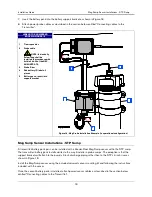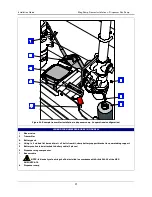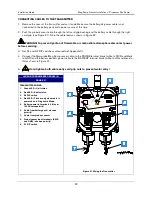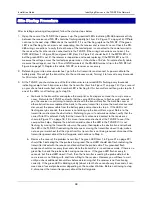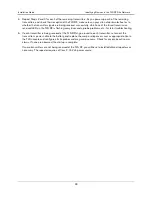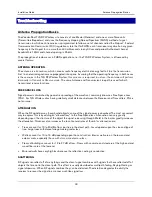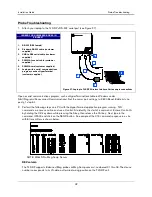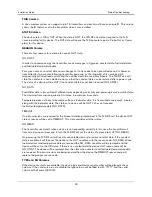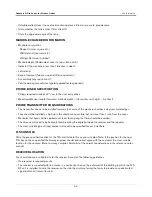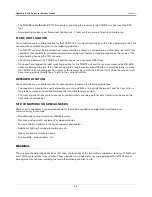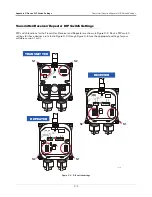
Installation Guide
Antenna Propagation Basics
30
Troubleshooting
Antenna Propagation Basics
The Veeder-Root TLS RF Wireless site consists of one Master (Receiver) and one or more Slave units
(Transmitters/Repeaters) and uses the Frequency Hopping Spread Spectrum (FHSS) method of signal
transmission in which each transceiver is programmed to follow a set of channels called the ‘Hopset’. Federal
Communication Commission (FCC) regulations state that for FHSS: each transceiver may dwell on any given
frequency in the Hopset for no more than 400 milliseconds in any 30 second period. Authorized channel
bandwidth is 1 MHz and channel spacing is 25 kHz.
The propagation of radio waves in FHSS applications, i.e., the TLS RF Wireless System, is influenced by
several factors:
ANTENNA OPERATION
The antenna is a
transducer
, which converts radio frequency electrical energy fed to it (via the transmission
line) to an electromagnetic wave propagated into space. Assuming that the operating frequency in both cases
is the same, as in the TLS RF Wireless System,
this process is reciprocal in nature - the antenna will perform
identically in Transmit or Receive mode
. The same Antenna and Transmission Line path is used for both
transmit and receive functions.
FREE SPACE LOSS
Signal power is diminished by geometric spreading of the wavefront, commonly known as Free Space Loss
(FSL). For TLS Wireless sites having relatively small distances between the Receiver and Transmitters, FSL is
not an issue.
ATTENUATION
When the RF signal passes though solid objects, some of the signal power is absorbed. The most convenient
way to express this is by adding an “allowed loss” to the Free Space loss. Attenuation can vary greatly
depending upon the structure of the object the signal is passing through. Metal in the barrier greatly increases
the attenuation. Thickness also increases the loss. General rules of thumb for attenuation are:
•
Trees account for 10 to 20 dB of loss per tree in the direct path. Loss depends upon the size and type of
tree. Large trees with dense foliage create greater loss.
•
Walls account for 10 to 15 dB depending upon the construction. Interior walls are on the low end and
exterior walls, especially those with stucco, create more loss.
•
Floors of buildings account for 12 to 27 dB of loss. Floors with concrete and steel are at the high end and
wood floors are at the low end.
•
Mirrored walls have very high loss because the reflective coating is conductive.
SCATTERING
RF signals can reflect off of many things and the direct signal combines with signals that have reflected off of
objects that are not in the direct path. This effect is usually described as multipath, fading, Rayleigh fading or
signal dispersion. When RF signals combine they can be distorted. The distortion degrades the ability the
receiver to recover the signal in a manner much like signal loss.




